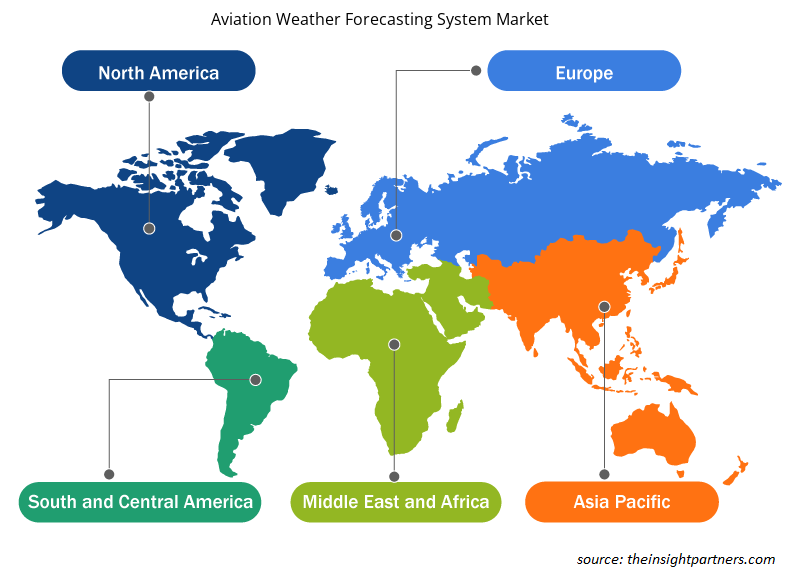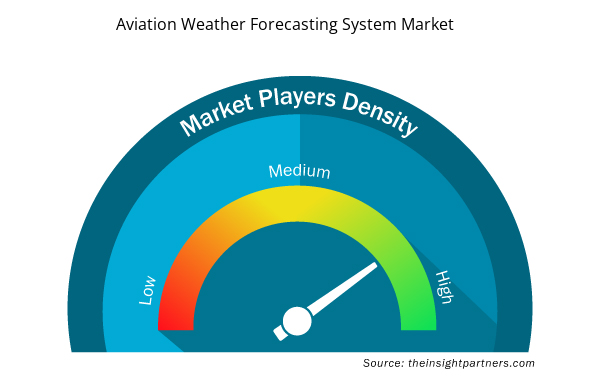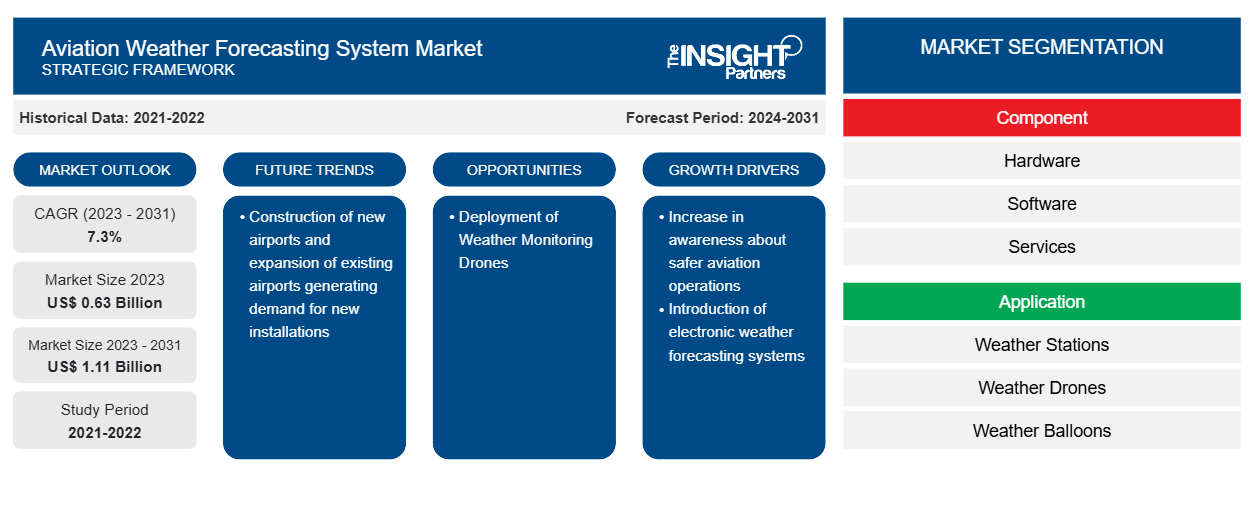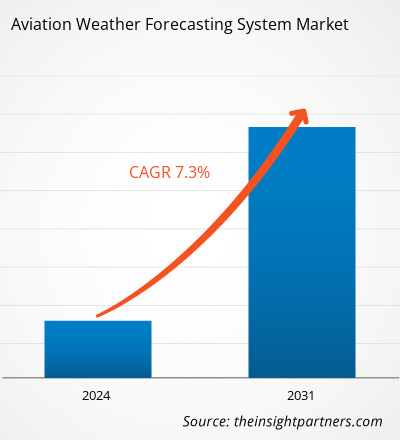航空気象予報システムの市場規模は、2023年の6億3,000万米ドルから2031年には11億1,000万米ドルに達すると予測されています。市場は2023年から2031年の間に7.3%のCAGRを記録すると予想されています。新しい空港の建設と既存の空港の拡張により、新しい設備の需要が生まれ、市場の主要なトレンドであり続けると思われます。
航空気象予報システム市場分析
世界の航空気象予報システム市場で活動している主要企業には、Collins Aerospace、ENAV SpA、IBM Corporation、Vaisala、Campbell Scientific Inc. などがあります。この市場は、国内外の需要に応える複数の有名企業によって高度に統合されています。航空気象予報システム市場調査によると、これらの企業は、他の企業と比較して、世界の航空気象予報システム市場で累積的に大きなシェアを獲得しています。
航空気象予報システム市場の概要
航空気象予報システムのプレーヤーには、相互に依存しているハードウェアメーカーとソフトウェアプロバイダーの両方が含まれます。ハードウェアメーカーとソフトウェアプロバイダーには、Collins Aerospace、IBM Corporation、Campbell Scientific Inc、Sutron、DTN、Spire Global、Universal Weather and Aviation Inc、Vaisala、Ubimetなどがあります。航空気象予報システム市場には、世界市場のかなりの部分を占めるビジネスに従事している多くの小規模プレーヤーがあります。小規模プレーヤーは、今後数年間で市場規模をさらに拡大する新しいテクノロジーの開発のための研究開発活動にも携わっています。これらの組織は、政府規制機関の支援を受けて、高まる顧客ニーズに応じて、長年にわたり新しい高度な航空気象予報システムの開発への投資を増やしてきました。政府規制機関は、軍用空港や商業空港に契約を提供することで、ハードウェアメーカーとソフトウェアプロバイダーの両方の航空気象予報システムを支援しています。
要件に合わせてレポートをカスタマイズする
このレポートの一部、国レベルの分析、Excelデータパックなど、あらゆるレポートを無料でカスタマイズできます。また、スタートアップや大学向けのお得なオファーや割引もご利用いただけます。
- このレポートの主要な市場動向を入手してください。この無料サンプルには、市場動向から見積もりや予測に至るまでのデータ分析が含まれます。
航空気象予報システム市場の推進要因と機会
電子気象予報システムの導入
天気予報に関連する電子システムの導入と採用により、市場ベンダーは革新的な製品を開発し、急増する需要に応えるよう促されています。さらに、いくつかの空港は、施設全体でより安全な運用を実現するために、滑走路と空港敷地内に電子気象監視システムを設置する取り組みを行っています。たとえば、2024年1月、コロラド州のサライダ空港-ハリエットアレクサンダーフィールド(KANK)は、空港での着陸操作をより安全に実施し、空港の空気の状態をよりよく把握できるようにする最新の電子気象システムの開設と運用開始を発表しました。
気象観測ドローンの配備
気象ドローンは、地球の大気の最下層(境界層)を飛行するように特別に設計されており、大気中の温度、風、湿度、雷雨、気圧に関する情報を収集するためのセンサーが装備されています。気象データを収集するためのドローンの配備は、予測期間中に市場ベンダーに大きな機会を生み出すと予想される主要な要因の1つです。これらのドローンには、湿度、圧力、温度などの気象データを収集して気象ステーションに報告する熱力学センサーが搭載されています。リアルタイム予報システムは、空港でこのデータを利用できます。リアルタイム予報システムは、データを使用して航空交通環境の気象予報と最新情報を提供します。現在、いくつかの組織が、より効率的なドローンデータ収集システムの開発に取り組んでおり、より信頼性の高いドローン気象監視システムを実現し、航空業界全体の気象予報システムにより正確でリアルタイムのデータを提供するために利用できます。
航空気象予報システム市場レポートのセグメンテーション分析
航空気象予報システム市場分析の導出に貢献した主要なセグメントは、コンポーネント、アプリケーション、および予報タイプです。
- 航空気象予報システム市場は、コンポーネントに基づいて、ハードウェア、ソフトウェア、サービスに分類されます。ハードウェアセグメントは、2023年に大きな市場シェアを占めました。
- 航空気象予報システム市場は、用途別に気象観測所、気象ドローン、気象気球などに分類されます。気象観測所セグメントは、2023年に大きな市場シェアを占めました。
- 予測タイプに基づいて、航空気象予報システム市場は、短期、中期、長期、長期に分類されます。短期セグメントは、2023年に大きな市場シェアを占めました。
航空気象予報システムの地域別市場シェア分析
航空気象予報システム市場レポートの地理的範囲は、主に北米、ヨーロッパ、アジア太平洋、中東およびアフリカ、南米の 5 つの地域に分かれています。
2023年には北米が市場を支配し、ヨーロッパとアジア太平洋地域がそれに続きます。さらに、アジア太平洋地域は今後数年間で最高のCAGRを記録する可能性もあります。アジア太平洋地域で人口の多い2か国、つまり中国とインドは、すでに新空港建設の将来計画を発表しています。たとえば、2023年にインド政府は、2025年末までに国内に80の新しい空港を建設する計画を発表しました。同様に、中国も2035年末までに216の新しい空港を建設する計画を発表しました。これにより、今後数年間でアジア太平洋地域全体で航空気象予報システム市場の導入がさらに促進されると予想されます。
航空気象予報システム市場の地域別分析
予測期間を通じて航空気象予報システム市場に影響を与える地域的な傾向と要因は、Insight Partners のアナリストによって徹底的に説明されています。このセクションでは、北米、ヨーロッパ、アジア太平洋、中東、アフリカ、南米、中米にわたる航空気象予報システム市場のセグメントと地理についても説明します。

- 航空気象予報システム市場の地域別データを入手
航空気象予報システム市場レポートの範囲
| レポート属性 | 詳細 |
|---|---|
| 2023年の市場規模 | 6億3千万米ドル |
| 2031年までの市場規模 | 11億1千万米ドル |
| 世界のCAGR(2023年~2031年) | 7.3% |
| 履歴データ | 2021-2022 |
| 予測期間 | 2024-2031 |
| 対象セグメント | コンポーネント別
|
| 対象地域と国 | 北米
|
| 市場リーダーと主要企業プロフィール |
|
航空気象予報システム市場のプレーヤー密度:ビジネスダイナミクスへの影響を理解する
航空気象予報システム市場は、消費者の嗜好の変化、技術の進歩、製品の利点に対する認識の高まりなどの要因により、エンドユーザーの需要が高まり、急速に成長しています。需要が高まるにつれて、企業は提供を拡大し、消費者のニーズを満たすために革新し、新たなトレンドを活用し、市場の成長をさらに促進しています。
市場プレーヤー密度とは、特定の市場または業界内で活動している企業または会社の分布を指します。これは、特定の市場スペースに、その市場規模または総市場価値に対してどれだけの競合相手 (市場プレーヤー) が存在するかを示します。
航空気象予報システム市場で事業を展開している主要企業は次のとおりです。
- キャンベルサイエンティフィック株式会社
- コリンズエアロスペース
- IBMコーポレーション
- サトロン株式会社
- ヴァイサラ
- ユニバーサル・ウェザー・アンド・アビエーション社
免責事項:上記の企業は、特定の順序でランク付けされていません。

- 航空気象予報システム市場のトップキープレーヤーの概要を入手
航空気象予報システム市場のニュースと最近の動向
航空気象予報システム市場は、主要な企業出版物、協会データ、データベースなどの一次調査と二次調査後の定性的および定量的データを収集することによって評価されます。航空気象予報システム市場におけるいくつかの動向を以下に示します。
- 英国気象庁、FLYHT Aerospace Solutions Ltd. (TSX-V: FLY) (OTCQX: FLYLF)、Loganairの提携は、英国における天気予報の精度と局所的な悪天候の予測を向上させることを目指しており、航空業界にとっては、より効率的なルート計画やCO2排出量削減目標の支援など、メリットが期待されています。(出典: 英国気象庁、プレスリリース、2023年8月)
- アルゼンチン・ナベガシオン・アレア航空は、サン・ミゲル・デ・トゥクマン空港、サン・サルバドル・デ・フフイ空港、サルタ・アルゼンチン空港における3つの新しい自動気象観測システム(AWOS)の設置作業が完了したと発表した。 (出典: Empresa Argentina de Navegación Aérea、プレスリリース、2022 年 1 月)
航空気象予報システム市場レポートの対象範囲と成果物
「航空気象予報システム市場規模と予測(2021〜2031年)」レポートでは、以下の分野をカバーする市場の詳細な分析を提供しています。
- 航空気象予報システムの市場規模と予測(対象範囲に含まれるすべての主要市場セグメントについて、世界、地域、国レベルで)
- 航空気象予報システムの市場動向、および推進要因、制約、主要な機会などの市場動向
- ポーターのファイブフォース分析の詳細
- 航空気象予報システム市場分析では、主要な市場動向、世界および地域の枠組み、主要プレーヤー、規制、最近の市場動向を網羅しています。
- 航空気象予報システム市場の市場集中、ヒートマップ分析、主要プレーヤー、最近の動向を網羅した業界展望と競争分析
- 詳細な企業プロフィール
- 過去2年間の分析、基準年、CAGRによる予測(7年間)
- PEST分析とSWOT分析
- 市場規模価値/数量 - 世界、地域、国
- 業界と競争環境
- Excel データセット


- Transdermal Drug Delivery System Market
- Airport Runway FOD Detection Systems Market
- Constipation Treatment Market
- Genetic Testing Services Market
- Educational Furniture Market
- Clinical Trial Supplies Market
- Diaper Packaging Machine Market
- Precast Concrete Market
- Greens Powder Market
- Redistribution Layer Material Market

Report Coverage
Revenue forecast, Company Analysis, Industry landscape, Growth factors, and Trends

Segment Covered
This text is related
to segments covered.

Regional Scope
North America, Europe, Asia Pacific, Middle East & Africa, South & Central America

Country Scope
This text is related
to country scope.
よくある質問
North America region dominated the aviation weather forecasting system market in 2023.
Increase in awareness about safer aviation operations and introduction of electronic weather forecasting systems are some of the factors driving the growth for aviation weather forecasting system market.
Construction of new airports and expansion of existing airports generating demand for new installations is one of the major trends of the market.
Campbell Scientific Inc, Collins Aerospace, IBM Corporation, Sutron Corporation, Vaisala, Universal Weather and Aviation Inc, ENAV SpA, DTN, and Spire Global are some of the key players profiled under the report.
The estimated value of the aviation weather forecasting system market by 2031 would be around US$ 1.11 billion.
The aviation weather forecasting system market is likely to register of 7.3% during 2023-2031.
Trends and growth analysis reports related to Aerospace and Defense : READ MORE..
The Insight Partners performs research in 4 major stages: Data Collection & Secondary Research, Primary Research, Data Analysis and Data Triangulation & Final Review.
- Data Collection and Secondary Research:
As a market research and consulting firm operating from a decade, we have published and advised several client across the globe. First step for any study will start with an assessment of currently available data and insights from existing reports. Further, historical and current market information is collected from Investor Presentations, Annual Reports, SEC Filings, etc., and other information related to company’s performance and market positioning are gathered from Paid Databases (Factiva, Hoovers, and Reuters) and various other publications available in public domain.
Several associations trade associates, technical forums, institutes, societies and organization are accessed to gain technical as well as market related insights through their publications such as research papers, blogs and press releases related to the studies are referred to get cues about the market. Further, white papers, journals, magazines, and other news articles published in last 3 years are scrutinized and analyzed to understand the current market trends.
- Primary Research:
The primarily interview analysis comprise of data obtained from industry participants interview and answers to survey questions gathered by in-house primary team.
For primary research, interviews are conducted with industry experts/CEOs/Marketing Managers/VPs/Subject Matter Experts from both demand and supply side to get a 360-degree view of the market. The primary team conducts several interviews based on the complexity of the markets to understand the various market trends and dynamics which makes research more credible and precise.
A typical research interview fulfils the following functions:
- Provides first-hand information on the market size, market trends, growth trends, competitive landscape, and outlook
- Validates and strengthens in-house secondary research findings
- Develops the analysis team’s expertise and market understanding
Primary research involves email interactions and telephone interviews for each market, category, segment, and sub-segment across geographies. The participants who typically take part in such a process include, but are not limited to:
- Industry participants: VPs, business development managers, market intelligence managers and national sales managers
- Outside experts: Valuation experts, research analysts and key opinion leaders specializing in the electronics and semiconductor industry.
Below is the breakup of our primary respondents by company, designation, and region:

Once we receive the confirmation from primary research sources or primary respondents, we finalize the base year market estimation and forecast the data as per the macroeconomic and microeconomic factors assessed during data collection.
- Data Analysis:
Once data is validated through both secondary as well as primary respondents, we finalize the market estimations by hypothesis formulation and factor analysis at regional and country level.
- Macro-Economic Factor Analysis:
We analyse macroeconomic indicators such the gross domestic product (GDP), increase in the demand for goods and services across industries, technological advancement, regional economic growth, governmental policies, the influence of COVID-19, PEST analysis, and other aspects. This analysis aids in setting benchmarks for various nations/regions and approximating market splits. Additionally, the general trend of the aforementioned components aid in determining the market's development possibilities.
- Country Level Data:
Various factors that are especially aligned to the country are taken into account to determine the market size for a certain area and country, including the presence of vendors, such as headquarters and offices, the country's GDP, demand patterns, and industry growth. To comprehend the market dynamics for the nation, a number of growth variables, inhibitors, application areas, and current market trends are researched. The aforementioned elements aid in determining the country's overall market's growth potential.
- Company Profile:
The “Table of Contents” is formulated by listing and analyzing more than 25 - 30 companies operating in the market ecosystem across geographies. However, we profile only 10 companies as a standard practice in our syndicate reports. These 10 companies comprise leading, emerging, and regional players. Nonetheless, our analysis is not restricted to the 10 listed companies, we also analyze other companies present in the market to develop a holistic view and understand the prevailing trends. The “Company Profiles” section in the report covers key facts, business description, products & services, financial information, SWOT analysis, and key developments. The financial information presented is extracted from the annual reports and official documents of the publicly listed companies. Upon collecting the information for the sections of respective companies, we verify them via various primary sources and then compile the data in respective company profiles. The company level information helps us in deriving the base number as well as in forecasting the market size.
- Developing Base Number:
Aggregation of sales statistics (2020-2022) and macro-economic factor, and other secondary and primary research insights are utilized to arrive at base number and related market shares for 2022. The data gaps are identified in this step and relevant market data is analyzed, collected from paid primary interviews or databases. On finalizing the base year market size, forecasts are developed on the basis of macro-economic, industry and market growth factors and company level analysis.
- Data Triangulation and Final Review:
The market findings and base year market size calculations are validated from supply as well as demand side. Demand side validations are based on macro-economic factor analysis and benchmarks for respective regions and countries. In case of supply side validations, revenues of major companies are estimated (in case not available) based on industry benchmark, approximate number of employees, product portfolio, and primary interviews revenues are gathered. Further revenue from target product/service segment is assessed to avoid overshooting of market statistics. In case of heavy deviations between supply and demand side values, all thes steps are repeated to achieve synchronization.
We follow an iterative model, wherein we share our research findings with Subject Matter Experts (SME’s) and Key Opinion Leaders (KOLs) until consensus view of the market is not formulated – this model negates any drastic deviation in the opinions of experts. Only validated and universally acceptable research findings are quoted in our reports.
We have important check points that we use to validate our research findings – which we call – data triangulation, where we validate the information, we generate from secondary sources with primary interviews and then we re-validate with our internal data bases and Subject matter experts. This comprehensive model enables us to deliver high quality, reliable data in shortest possible time.


 このレポートの無料サンプルを入手する
このレポートの無料サンプルを入手する